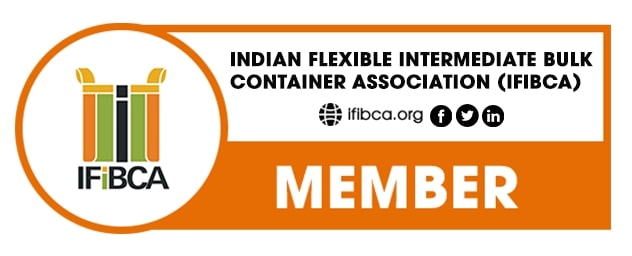The anti-static container bag is a kind of bag that combines design features to prevent damage from static electricity. You need to assess the materials, machines, and processes you use to determine the risk of FIBC and the level of FIBC protection required.
The electrostatic diffusible container bag is a kind of anti-static fabric bulk bag that can safely discharge static electricity. It can be dispersed in the ground via an electrostatic grounding wire or released to the atmosphere without grounding via a process called air ionization or corona.
Static electricity is always an issue when handling bulk bags, especially when handling flammable materials. There is always a risk of sparks, fire, or explosion. A simple and effective way to solve this common problem is with an anti-static bulk bag. We show you some useful information you need to know about anti-static bulk bags.
There are two types of anti-static big bags
From the point of view of static protection, there are two types of big bags that provide anti-static protection: type C and type D. The difference is in how these bags are anti-static and how they are used in different ways.
Container bag to avoid static electricity
To avoid the rapid build-up of charges in Bulk Bags, you should use anti-static Bulk Bags, or more specifically Type C Bulk Bags. A design feature of Type C Bulk Bag is that it is woven horizontally or through the bag with a conductive thread of polypropylene fabric. The seams at the top and bottom of this bag have grounding tabs. The interconnection of conductive fibers and groundsheets provides excellent antistatic performance.
Check grounding requirements
Different FIBCs require different types of environments to function effectively. Antistatic container bags are no exception. For example, if you are using a Type C bag, you should make sure that the ground connection is not broken while charging or discharging. Even when the bag is earthed, special care should be taken to ensure that the bag does not withstand earthing, especially when transporting or unloading combustible powders in the presence of combustible gases, combustible vapors, or dust.
Avoid combustion emissions
When handling combustible materials, it is necessary to pay attention to all aspects of fire hazards. So, if you want to protect combustible materials from combustion sparks from brush discharges or diffuse brushes, you should choose a D-type bulk bag. D-type bulk bags, also called unnecessary bulk bags, offer this protection because they use a special fabric to dissipate the charge directly into the atmosphere and do not need to be earthed.
Safety tips for loose bags
Type D bulk bags are easier to use because the bag does not need to be grounded, but is inherently less reliable. Special care should be taken to ensure that the surface of this bag is not covered with electrically conductive, combustible, or flammable materials. Contamination or coating can prevent the dissipation properties of big bags and compromise the transport of flammable materials.
Antistatic big bags are increasingly popular in all areas because they not only save incidental costs but are also essential to the happiness and safety of ground personnel.



